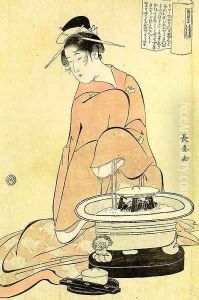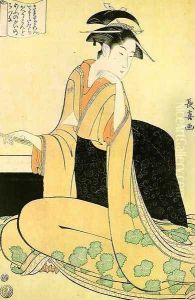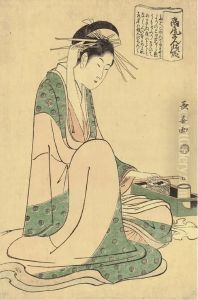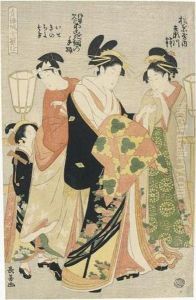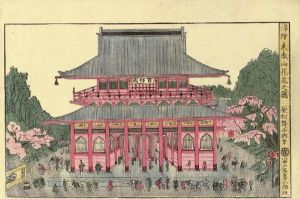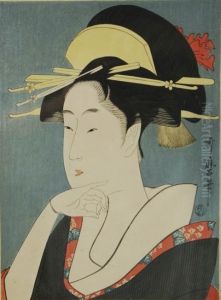Eishosai Choki Paintings
Eishosai Choki, also known as Momokawa Choki, was a Japanese ukiyo-e artist whose exact birth and death dates are not well-documented, but his active period is generally considered to be from the late 18th century to the early 19th century. Choki was a contemporary of the more famous ukiyo-e masters, such as Utamaro and Sharaku, and worked primarily in Edo (present-day Tokyo), which was the heart of the ukiyo-e movement. The ukiyo-e genre of art flourished during the Edo period in Japan, focusing on subjects like beautiful women, kabuki actors, sumo wrestlers, scenes from history and folk tales, travel scenes, and landscapes.
Choki is particularly noted for his bijin-ga (pictures of beautiful women). His style is distinctive, characterized by elegant and slender figures with elongated features, which set his work apart from that of his contemporaries. Despite his talent and the quality of his work, Choki never achieved the same level of fame as some of his contemporaries. However, his contributions to the ukiyo-e genre are significant, and his works are appreciated for their beauty and technical skill.
Little is known about Choki’s life, and much of what is understood about him comes from studying his works and the few historical records that mention him. It is believed that he may have been a student of Torii Kiyonaga, a prominent ukiyo-e artist of the time, though this is not definitively proven. Throughout his career, Choki used several go (artist names), including Shiko, which makes the attribution of his works somewhat challenging for art historians.
Eishosai Choki’s legacy, while not as widely recognized as that of some of his peers, remains an important part of the ukiyo-e tradition. His works are held in numerous art collections around the world, where they continue to be studied and admired for their contribution to the development of Japanese art. His delicate portrayals of women, in particular, offer a unique insight into the aesthetics and culture of Edo-period Japan.
